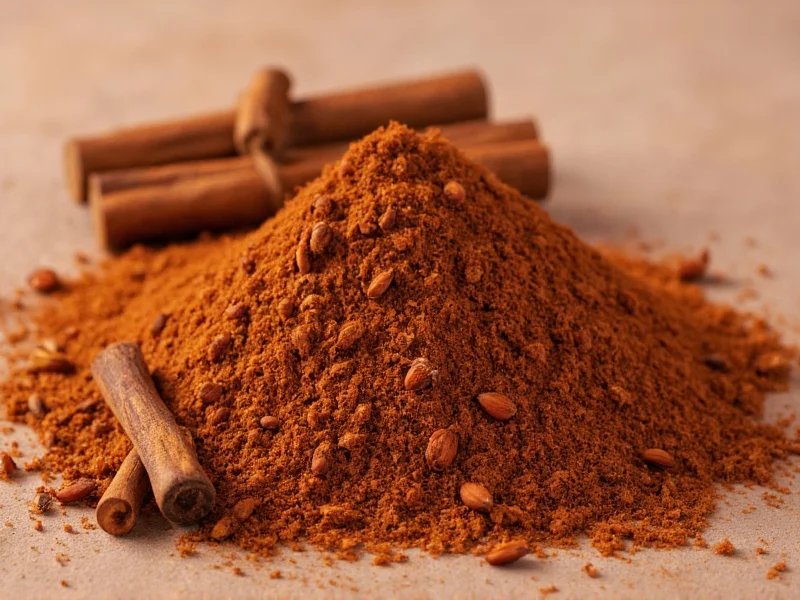Anise (Pimpinella anisum) has been treasured since ancient times for its distinctive flavor profile that elevates culinary creations. Unlike artificial licorice flavors, genuine anise delivers a sophisticated balance of sweetness and warmth that transforms ordinary recipes into extraordinary experiences. The magic lies in anethole, the essential oil comprising 80-90% of anise's volatile compounds, which creates that signature taste sensation recognized worldwide.
Understanding Anise's Flavor Chemistry
Anethole isn't just responsible for anise's characteristic taste—it's the same compound found in fennel and star anise, though in different concentrations. What makes true anise unique is its specific ratio of trans-anethole (the sweet component) to other volatile oils like estragole and limonene. This precise chemical composition creates a cleaner, brighter licorice note compared to star anise's more intense, slightly bitter profile.
| Spice | Anethole Content | Flavor Characteristics | Best Culinary Uses |
|---|---|---|---|
| True Anise Seeds | 80-90% | Sweet, warm, clean licorice with subtle floral notes | Baking, Mediterranean dishes, liqueurs |
| Star Anise | 75-90% | Intense, sharper licorice with slight bitterness | Asian braises, soups, mulled beverages |
| Fennel Seeds | 60-70% | Milder, fresher licorice with herbal notes | Salads, seafood, Italian sausages |
Culinary Applications Across Global Cuisines
Mediterranean cooking relies on anise for traditional breads like Greek koulourakia and Italian panettone, where its flavor complements citrus and butter notes. In Mexican cuisine, anise enhances atole and champurrado beverages, while Middle Eastern recipes feature it in za'atar blends and meat rubs. Professional chefs appreciate how anise's flavor intensifies when toasted, releasing complex aromatic compounds that ground versions can't match.
Mastering Anise Flavor Pairings
Successful anise usage depends on thoughtful pairings that balance its potent character. Consider these proven combinations:
- Sweet applications: Pairs beautifully with citrus (especially orange), chocolate, cinnamon, and stone fruits like plums and cherries
- Savory dishes: Complements pork, duck, root vegetables, and tomato-based sauces
- Beverage blends: Enhances coffee, hot chocolate, and mulled wines when used sparingly
When working with anise spice flavor in baking, remember that ground anise loses potency quickly. For maximum impact in cookies or cakes, toast whole seeds first, then grind them fresh. In savory applications like braised meats, add whole seeds early in cooking to allow flavors to meld, then remove before serving.
Common Misconceptions About Anise
Many confuse anise with star anise or fennel, but each brings distinct characteristics to cooking. True anise seeds come from a flowering plant in the parsley family, while star anise is a fruit pod from an evergreen tree. Though both contain anethole, anise offers a sweeter, more delicate profile ideal for baking, whereas star anise provides deeper, woodier notes perfect for slow-cooked dishes. Understanding these differences prevents recipe failures and unlocks authentic flavor profiles.
Preserving Anise's Delicate Flavor
To maintain anise spice flavor integrity, store whole seeds in airtight containers away from light and heat. Properly stored, they retain peak flavor for 2-3 years, compared to just 6-12 months for ground anise. For optimal results in your cooking, invest in a small spice grinder dedicated to anise and other potent seeds—this prevents cross-contamination of flavors that can ruin delicate dishes.
What's the difference between anise flavor and licorice flavor?
True anise flavor comes from anise seeds containing natural anethole, creating a sweet, warm licorice note. Commercial licorice candy often uses artificial anethole or other compounds that produce a sharper, more intense flavor without anise's subtle complexity and floral undertones.
Can I substitute star anise for anise seeds in recipes?
While both contain anethole, they're not perfect substitutes. Use 1 star anise pod for every 1/2 teaspoon of anise seeds, but recognize star anise delivers a stronger, slightly more bitter flavor. It works well in long-cooked dishes but may overwhelm delicate baked goods where true anise shines.
Why does anise taste like licorice to some people but not others?
Genetic differences affect how people perceive anethole. Some individuals have taste receptors that interpret anethole as intensely sweet licorice, while others experience it as more neutral or even slightly bitter. This genetic variation explains why anise spice flavor polarizes palates despite its widespread culinary use.
How can I reduce the intensity of anise flavor in a dish?
Balance overpowering anise flavor by adding acidic components like lemon juice or vinegar, which cut through the sweetness. Dairy products like cream or yogurt also help moderate intense licorice notes. For future reference, start with half the recommended amount and build gradually, as anise flavor intensifies during cooking.











 浙公网安备
33010002000092号
浙公网安备
33010002000092号 浙B2-20120091-4
浙B2-20120091-4